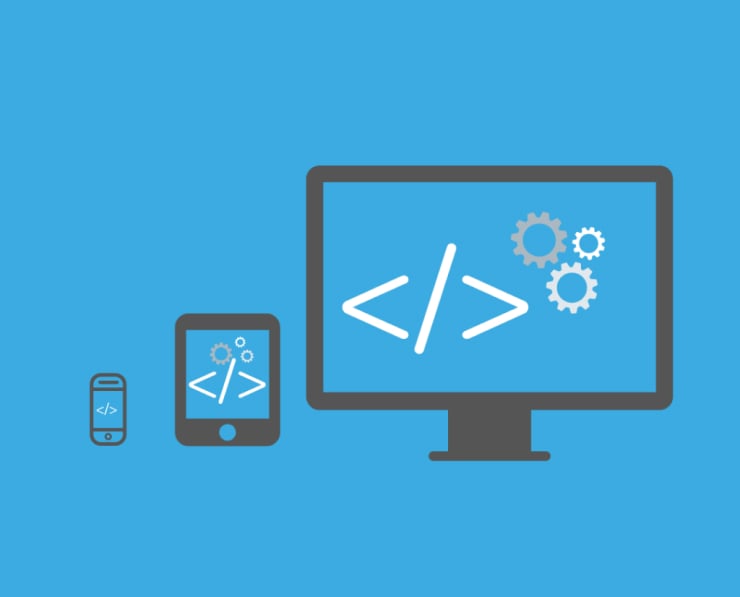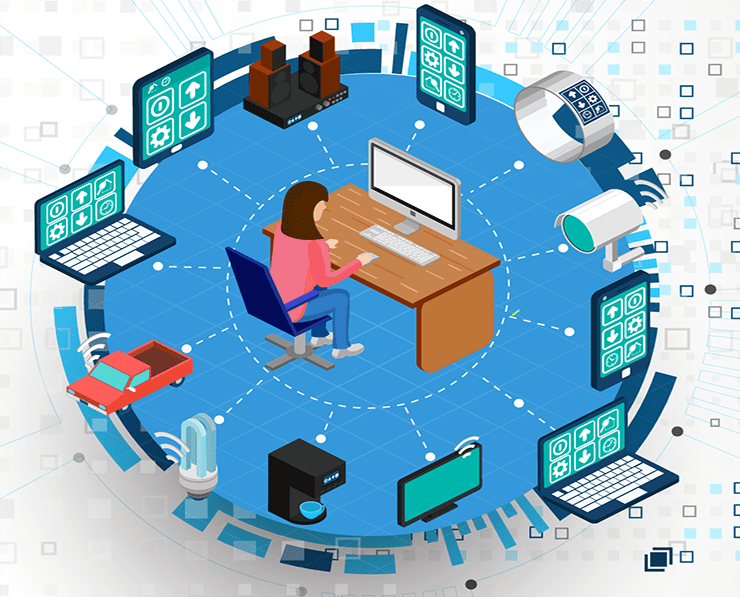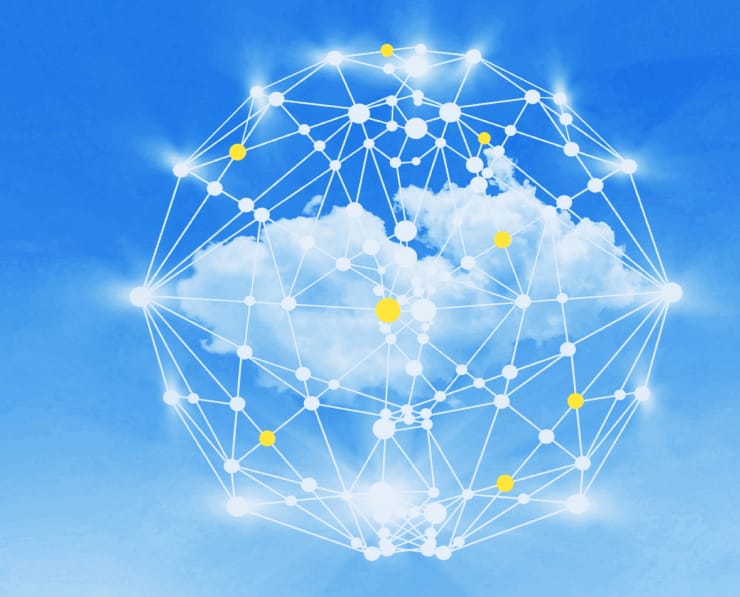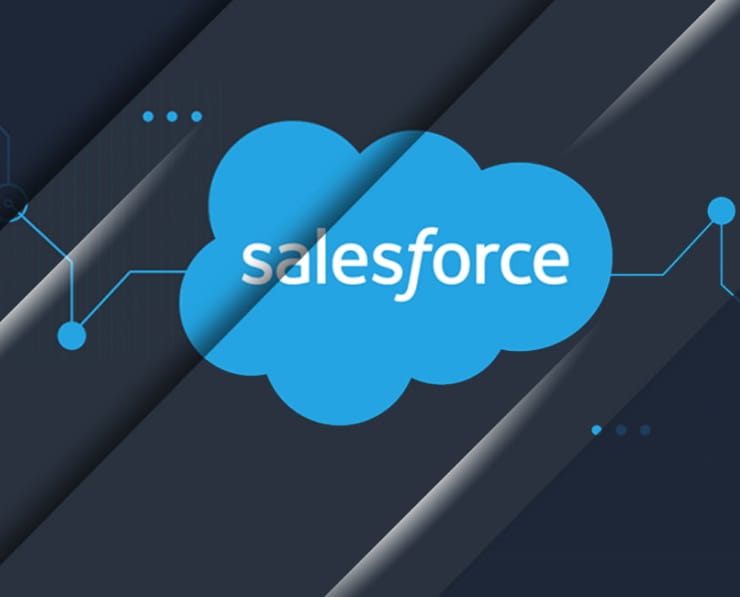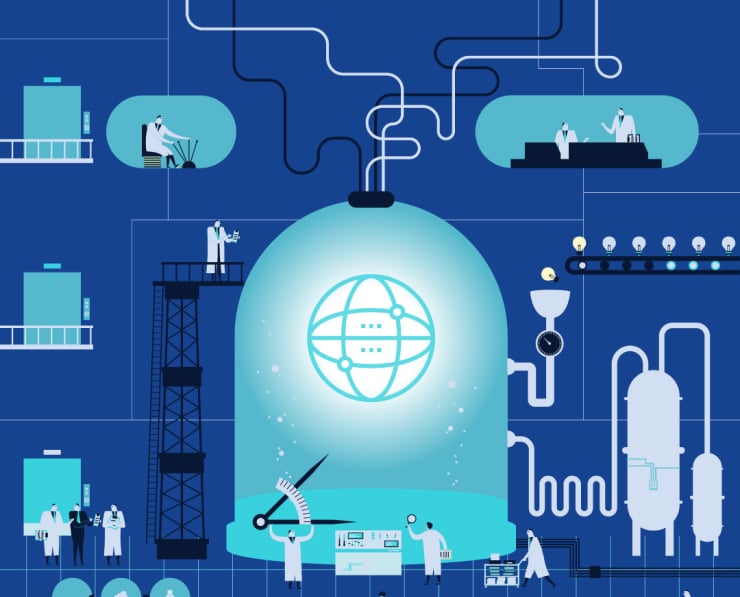Student Feedback
Certified Platform App Builder Certification Video Training Course Outline
1 – Introduction & Overview
2 – Salesforce Fundamentals
3 - Data Modeling and Management
4 - Security
5 – Business Logic and Process A...
6 – User Interface
7 – Reporting
8 – Mobile
9 – App Development and Deployment
10 – Additional Items and Final ...
1 – Introduction & Overview
Certified Platform App Builder Certification Video Training Course Info
Comprehensive Salesforce Platform App Builder Course for Career Growth
Achieve Salesforce Platform App Builder Certification in just 30 days with guided lessons and included practice exams.
What you will learn from this course
• Prepare for the Salesforce Platform App Builder Certification
• Gain hands-on experience building custom applications using Salesforce Lightning
• Understand and implement Salesforce out-of-the-box features
• Apply business logic and automation using point-and-click tools
• Learn to manage data modeling, security, and sharing rules effectively
• Gain practical experience with real-world business scenarios
• Practice exam-style questions to improve certification readiness
• Develop skills to pursue a Salesforce Administrator role after course completion
Learning Objectives
Upon completing this course, students will be able to:
• Build custom applications in Salesforce using the Lightning User Interface
• Configure objects, fields, and relationships to meet business requirements
• Apply point-and-click automation tools such as workflows, process builder, and flows
• Implement security and sharing settings for users and data
• Understand data modeling and management concepts including master-detail, lookup relationships, and schema design
• Use reporting and dashboard tools to analyze business data effectively
• Deploy applications and components to production environments using best practices
• Prepare and attempt the Salesforce Platform App Builder certification exam confidently
Target Audience
This course is designed for:
• Individuals seeking Salesforce Platform App Builder Certification
• Beginners who want to learn Salesforce administration and application development
• Business analysts and professionals looking to implement Salesforce solutions without coding
• Aspiring Salesforce Administrators aiming to build strong foundational knowledge
• Anyone interested in creating custom applications, automating business processes, and managing data in Salesforce
Overview
The Salesforce Platform App Builder course provides comprehensive training to help students master the tools and concepts needed to build powerful business applications on the Salesforce platform. Salesforce is a widely used customer relationship management system that allows businesses to streamline processes, manage customer data, and improve productivity. With the rise of cloud computing, knowledge of Salesforce has become a highly valuable skill in the technology and business landscape.
This course focuses on the declarative, no-code approach to application development, using the point-and-click interface in Salesforce Lightning. Learners will understand how to create custom objects, fields, and relationships and leverage automation tools to enhance productivity. By the end of the course, students will be able to translate business requirements into functional Salesforce applications without the need for programming.
The course also provides in-depth coverage of the Salesforce Platform App Builder Certification exam objectives, ensuring that learners are fully prepared for the exam. Each module contains practical examples, real-world scenarios, and practice questions to reinforce understanding and retention. Students will also learn about Salesforce best practices, which are essential for building scalable and maintainable solutions.
Hands-on exercises form a critical part of this course. Learners will have the opportunity to work on live Salesforce environments, building and customizing applications as they go. This practical approach not only reinforces theoretical knowledge but also equips students with real-world skills that are immediately applicable in professional settings.
Automation is a key component of the Salesforce platform, and this course covers tools such as workflow rules, process builder, approval processes, and flows. Students will learn when and how to use each tool effectively to streamline business processes. In addition, the course covers key aspects of Salesforce security, including profiles, roles, permission sets, and sharing rules, which are crucial for protecting sensitive business data.
Data modeling and management are essential skills for any Salesforce professional. Students will explore the differences between standard and custom objects, understand various types of relationships, and learn to design a data model that supports business processes. Additionally, reporting and dashboard creation will be covered, enabling learners to provide actionable insights to decision-makers within an organization.
The course emphasizes a structured approach to learning, beginning with basic concepts and gradually advancing to more complex topics. This allows students to build a strong foundation before tackling automation, security, and advanced application development features. Practice tests are included throughout the course, giving learners the opportunity to evaluate their knowledge and readiness for the certification exam.
Another key feature of this course is the focus on real-world application. Students will work on case studies and practical exercises that simulate actual business scenarios. This approach ensures that learners not only understand the concepts but also know how to apply them effectively in a professional environment.
By the end of the course, students will have developed a complete custom application from scratch using Salesforce Lightning. They will understand the entire lifecycle of an application, from planning and data modeling to deployment and reporting. This holistic approach ensures that learners are well-prepared to take on the responsibilities of a Salesforce Administrator or Platform App Builder in the workplace.
In addition to technical skills, the course also focuses on exam preparation strategies. Learners will gain insight into the structure and content of the Salesforce Platform App Builder certification exam, including types of questions, scoring methods, and time management techniques. Practice exams are included to help students build confidence and improve their performance under exam conditions.
The course also highlights the importance of staying updated with Salesforce features and releases. Salesforce regularly introduces new functionalities and enhancements, and understanding these updates is critical for maintaining professional competence and passing certification exams.
Overall, this course provides a comprehensive roadmap for anyone looking to advance their career in Salesforce. Whether you are a beginner or a professional seeking certification, this training equips you with the skills, knowledge, and confidence needed to succeed in the Salesforce ecosystem. By completing this course, students will be ready to create custom applications, automate business processes, manage data effectively, and achieve certification in a structured and efficient manner.
Prerequisites
This course does not require any prior experience with Salesforce or programming. All concepts are explained from the ground up, making it accessible for beginners. While no prerequisites are strictly necessary, it is recommended to complete the course modules in order to gain the most benefit and ensure readiness for the Salesforce Platform App Builder certification exam. Familiarity with basic business processes and terminology can be helpful but is not mandatory.
Course Modules / Sections
The Salesforce Platform App Builder course is divided into carefully structured modules to guide learners step by step from fundamental concepts to advanced application development. Each module is designed to provide both theoretical knowledge and hands-on practice, ensuring a comprehensive understanding of the Salesforce platform.
The first module focuses on Salesforce fundamentals, introducing students to the platform, its capabilities, and the importance of declarative development. Students learn about Salesforce architecture, the difference between standard and custom objects, and the various types of applications that can be built. This module also covers navigation in Salesforce Lightning, enabling learners to interact confidently with the interface.
The second module delves into data modeling and management. This section provides an in-depth explanation of objects, fields, and relationships. Learners explore how to create custom objects, define field types, and establish relationships such as master-detail and lookup. Understanding data integrity and database design principles is emphasized, as these are critical for creating scalable and maintainable applications. The module also includes exercises on importing and exporting data, ensuring that students can handle real-world scenarios effectively.
The third module focuses on automation and business logic. Learners are introduced to declarative automation tools such as workflow rules, process builder, flows, and approval processes. Students learn when to use each tool, how to design automation processes efficiently, and how to test and debug workflows. Practical exercises are provided to simulate real business processes, giving students the confidence to implement automation in their own Salesforce environments.
The fourth module covers user interface customization. Students learn how to design page layouts, create record types, configure compact layouts, and build dynamic forms. The module also addresses Lightning App Builder, allowing learners to create custom apps with drag-and-drop components, tabs, and home pages. Understanding the user interface is essential to enhance user experience and ensure that applications are intuitive and functional.
The fifth module is dedicated to security and access management. Students explore profiles, roles, permission sets, and sharing rules. The module explains how to protect sensitive data while providing appropriate access to users. Case studies and hands-on exercises help learners implement security settings in real-world scenarios.
The sixth module focuses on reporting and analytics. Students learn how to create reports, dashboards, and charts to analyze data effectively. The module also includes exercises on custom report types and advanced filtering techniques. This ensures that learners can deliver actionable insights to stakeholders and support data-driven decision-making.
The seventh module covers application deployment and management. Learners explore change sets, sandbox environments, and best practices for deploying applications from development to production. This module ensures that students understand the full lifecycle of a Salesforce application and can manage it efficiently in a professional environment.
The final module prepares students for the Salesforce Platform App Builder certification exam. Practice exams, quizzes, and review sessions are included to reinforce learning. Students receive guidance on exam strategies, time management, and approaches to answer multiple-choice and multiple-select questions.
Key Topics Covered
The course provides a comprehensive coverage of topics required for the Salesforce Platform App Builder certification. Students start by understanding the fundamentals of Salesforce, including the architecture, navigation, and platform features. They learn about standard and custom objects, fields, and the importance of data modeling for application development.
Data management is a critical area of the course. Learners explore how to create and customize objects, define relationships, and manage records efficiently. Advanced topics such as schema design, data integrity, validation rules, and formula fields are also covered. Students gain practical experience in importing, exporting, and manipulating data using tools like Data Loader, ensuring they can handle complex business requirements.
Business logic and automation are emphasized throughout the course. Learners understand workflow rules, process automation using Process Builder, and advanced flow design. Approval processes, automation triggers, and real-time business scenarios are included to give students a thorough understanding of how Salesforce can streamline operations. Exercises include creating automated processes for lead management, case escalation, and opportunity tracking.
User interface customization is another key topic. Students explore page layouts, record types, compact layouts, Lightning App Builder, and dynamic forms. Learners gain practical skills in designing user-friendly interfaces and improving the user experience. Advanced features such as custom tabs, components, and navigation strategies are also covered.
Security and access control are essential for any Salesforce professional. Students learn about profiles, roles, permission sets, organization-wide defaults, sharing rules, and record-level access. Hands-on exercises demonstrate how to protect sensitive data while maintaining appropriate user access. Scenarios include configuring role hierarchies, managing delegated administration, and applying security best practices in multi-user environments.
Reporting and analytics topics include creating standard and custom reports, dashboards, charts, and data visualization techniques. Students practice designing reports to meet business needs, creating complex filters, and leveraging report types. The course also covers reporting snapshots, dynamic dashboards, and reporting for mobile devices.
Application deployment and lifecycle management are included to ensure learners understand how to move applications between environments safely. Students gain experience with sandbox testing, change sets, version control, and deployment strategies. Best practices for monitoring, maintaining, and scaling applications are discussed, preparing students for professional work in Salesforce environments.
Finally, exam preparation topics cover the structure and format of the Salesforce Platform App Builder exam. Students learn about scoring, time management, and question types. Practice exams, quizzes, and review exercises help reinforce knowledge and identify areas requiring improvement. This ensures that students are fully prepared and confident when attempting the certification exam.
Teaching Methodology
The teaching methodology in this course is designed to provide an interactive, hands-on learning experience. Concepts are introduced with clear explanations, supported by examples from real-world business scenarios. Each topic includes practical exercises that allow students to apply their knowledge immediately. This approach ensures that learners not only understand theoretical concepts but also gain the confidence to implement them in professional environments.
Lectures are delivered through video tutorials, presentations, and live demonstrations in Salesforce environments. Step-by-step guides help learners navigate through objects, fields, workflows, and automation tools. Visual examples and scenario-based exercises reinforce learning and demonstrate practical application.
Hands-on projects are an integral part of the teaching methodology. Students work on building custom applications, configuring workflows, and designing reports, simulating real business requirements. This experiential learning ensures that students develop problem-solving skills and gain practical expertise.
Quizzes and assessments are included throughout the course to reinforce key concepts. Learners receive immediate feedback on their performance, helping them identify knowledge gaps and focus on areas that need improvement. Regular practice exams mirror the format and difficulty of the Salesforce Platform App Builder certification exam, ensuring students are well-prepared.
The course also emphasizes interactive learning through discussion forums, peer collaboration, and instructor support. Students can clarify doubts, share insights, and learn from each other’s experiences. This collaborative approach enhances understanding and engagement.
In addition to technical skills, students are guided on best practices, productivity tips, and strategies to succeed in a professional Salesforce environment. Emphasis is placed on creating scalable, maintainable, and efficient solutions that meet real business needs.
Assessment & Evaluation
Assessment and evaluation are integral components of the course to measure learner progress and exam readiness. Each module includes quizzes, hands-on exercises, and practical projects. Quizzes assess conceptual understanding and knowledge retention, while practical projects evaluate the application of skills in real-world scenarios.
Practice exams simulate the Salesforce Platform App Builder certification format, helping students develop exam strategies and time management skills. Detailed feedback is provided for each question, explaining the rationale behind correct and incorrect answers. This approach ensures that learners gain a deeper understanding of the subject matter.
Evaluation also includes the completion of hands-on exercises and projects. Students are assessed on their ability to design custom applications, implement automation, configure security, and create reports. Successful completion of these exercises demonstrates readiness to apply skills in professional environments.
Progress tracking is integrated into the course, allowing learners to monitor their development and identify areas requiring additional focus. Instructors provide guidance and support to ensure students achieve their learning objectives and are fully prepared for the certification exam.
The combination of theoretical knowledge, practical application, and structured evaluation ensures a holistic learning experience. By the end of the course, students are equipped with the skills, confidence, and certification readiness to succeed as Salesforce Platform App Builders.
This course structure, combined with hands-on projects, interactive learning, and comprehensive assessment, provides learners with a complete roadmap to mastering Salesforce application development. Students gain practical experience, understand certification requirements, and are fully prepared to pursue career opportunities in Salesforce administration and application building.
Benefits of the Course
Enrolling in this Salesforce Platform App Builder course provides multiple benefits that help students build expertise, advance their careers, and achieve certification. One of the primary advantages of the course is comprehensive preparation for the Salesforce Platform App Builder Certification. Students gain both theoretical knowledge and practical experience, which ensures they are fully ready to attempt the exam confidently.
The course also equips learners with hands-on experience in building custom applications using Salesforce Lightning. This practical approach enables students to understand how real-world business requirements are translated into functional Salesforce applications. By learning how to create objects, fields, relationships, workflows, and automation processes, students acquire skills that are highly valuable in professional settings.
Another significant benefit of this course is the focus on point-and-click application development. Students learn to automate business processes, manage data effectively, and design user interfaces without writing any code. This makes Salesforce accessible to a wide range of professionals, including business analysts, administrators, and project managers who may not have a technical background but want to leverage Salesforce for business success.
The course also provides in-depth knowledge of Salesforce features and functionalities, such as security settings, data management, reporting, dashboards, and mobile capabilities. Learners gain an understanding of how to configure and customize the platform to meet the specific needs of an organization. This comprehensive exposure ensures that students are capable of handling real-life Salesforce projects efficiently.
By the end of the course, students also gain practical experience with certification-focused practice exams and quizzes. This not only reinforces learning but also helps learners become familiar with the exam format, types of questions, and strategies for scoring well. The inclusion of real-world exercises ensures that learners are not only prepared for the exam but also ready to apply their knowledge in a professional context.
Additionally, the course enhances career opportunities. Salesforce skills are in high demand globally, and becoming a certified Platform App Builder opens doors to roles such as Salesforce Administrator, Business Analyst, Salesforce Consultant, and Application Developer. Learners also gain transferable skills that can be applied in various industries, including finance, healthcare, retail, and technology.
Students also benefit from structured learning that combines theory, hands-on practice, and assessment. This approach ensures that learners build a solid foundation in Salesforce and develop the confidence to implement solutions independently. The knowledge gained through this course empowers students to contribute effectively to business operations, streamline workflows, and provide actionable insights through reporting and analytics.
Course Duration
The Salesforce Platform App Builder course is designed to provide comprehensive learning while accommodating learners at different levels of experience. The course duration varies depending on the pace of study but is structured to be completed efficiently within a manageable timeframe. On average, students can complete the course in 4 to 6 weeks with consistent daily learning and practice.
The course is divided into modules, each covering specific topics such as Salesforce fundamentals, data modeling, business logic and automation, user interface customization, security, reporting, and deployment. Each module includes video lectures, practical exercises, and quizzes to reinforce learning. Learners are encouraged to spend additional time on hands-on projects and practice exams to ensure thorough understanding and retention of concepts.
The course is self-paced, allowing students to learn at their convenience. This flexibility is particularly beneficial for working professionals who wish to acquire Salesforce skills without disrupting their existing work commitments. While some learners may complete the course faster, others may choose a more gradual approach to ensure they fully grasp each concept before moving to the next module.
Regular practice and review are built into the course structure to ensure that students retain the knowledge required for the certification exam. By following the recommended schedule, learners can expect to be prepared for the Salesforce Platform App Builder exam within one to two months. The duration is designed to provide a balance between comprehensive learning and practical application, giving students enough time to gain hands-on experience with Salesforce tools.
In addition to the core learning duration, students should allocate extra time for practice exams and final review sessions. This helps ensure confidence and readiness for the certification exam. Completing the course within the suggested duration allows learners to apply for Salesforce Administrator and App Builder roles promptly, giving them a competitive advantage in the job market.
Tools & Resources Required
To successfully complete the Salesforce Platform App Builder course, learners need access to a few essential tools and resources. The primary requirement is a Salesforce Developer Edition account. This free account provides a full-featured Salesforce environment where students can practice building custom applications, creating workflows, designing reports, and experimenting with automation tools.
Students will also need a reliable computer with internet access. Most of the course content, including video lectures, practical exercises, and online assessments, is delivered digitally. A modern web browser such as Google Chrome or Mozilla Firefox is recommended to access Salesforce and course materials efficiently.
Familiarity with basic computer operations, spreadsheets, and internet navigation is sufficient to complete the course. No prior programming or technical knowledge is required, as the course focuses on point-and-click application development using declarative tools in Salesforce.
Additional resources include the course-provided study materials, lecture notes, and practice quizzes. These resources are designed to reinforce learning and provide reference material for exam preparation. Students are encouraged to take notes, complete exercises thoroughly, and review content regularly to maximize retention and understanding.
Access to Salesforce documentation and community forums can also enhance learning. Salesforce provides extensive online resources, including guides, tutorials, and knowledge articles that can be used to supplement course content. Community forums allow students to interact with other learners, seek clarification on complex topics, and share best practices.
For reporting and analytics exercises, learners may need access to sample datasets provided within the Salesforce Developer Edition or through course materials. These datasets allow students to practice creating reports, dashboards, and charts based on real-world scenarios.
Finally, learners are encouraged to use productivity tools such as spreadsheet software, note-taking applications, and task management tools to organize their learning process. These tools help students track progress, manage assignments, and plan study schedules effectively. By leveraging the available tools and resources, students can ensure a smooth learning experience and successful completion of the Salesforce Platform App Builder course.
The combination of hands-on Salesforce practice, structured course content, and supporting resources ensures that learners gain practical skills, theoretical knowledge, and exam readiness. By using the provided tools and resources effectively, students can build confidence, enhance problem-solving skills, and achieve certification success.
This course equips learners with all the necessary knowledge, practical skills, and resources to become proficient in Salesforce application development. Upon completion, students will have the confidence to manage real-world Salesforce projects, implement automation and security measures, create custom applications, and pursue a successful career in the Salesforce ecosystem.
Career Opportunities
Completing the Salesforce Platform App Builder course opens up numerous career opportunities in the Salesforce ecosystem and related technology fields. Salesforce is a leading cloud-based customer relationship management platform used by organizations globally to streamline business processes, improve customer interactions, and manage data efficiently. Professionals with Salesforce skills are in high demand, and certification as a Platform App Builder significantly enhances employability and career growth prospects.
One of the primary career paths for certified learners is Salesforce Administrator. Administrators are responsible for managing Salesforce environments, customizing applications, configuring workflows, maintaining data integrity, and ensuring optimal performance. They play a critical role in implementing business processes and supporting users across organizations. By completing this course, learners gain the practical skills and theoretical knowledge required to take on administrative responsibilities confidently.
Another career path is Salesforce App Builder or Developer. Although the course focuses on declarative, no-code application development, the knowledge gained equips learners with the foundation needed to design and deploy custom applications. App Builders create functional applications that address business needs, implement automation, manage data relationships, and build user-friendly interfaces. Certified professionals are valued for their ability to deliver scalable and efficient solutions without extensive coding, making them highly sought after in the industry.
Business Analysts and Salesforce Consultants also benefit from completing this course. Business Analysts work closely with stakeholders to gather requirements, translate them into technical specifications, and ensure that Salesforce solutions meet business objectives. Consultants provide strategic guidance, design solutions, and help organizations optimize their Salesforce implementation. Knowledge of Platform App Builder concepts allows these professionals to bridge the gap between business needs and technical execution effectively.
Project Managers and IT Professionals can leverage the skills acquired in this course to oversee Salesforce implementation projects. Understanding the capabilities of Salesforce, including automation, security, data modeling, and reporting, allows project managers to plan, execute, and monitor projects successfully. They can communicate effectively with development teams, ensure adherence to best practices, and achieve project goals on time and within budget.
In addition to these roles, completing the Platform App Builder course prepares learners for positions in industries such as finance, healthcare, retail, and technology. Organizations in these sectors increasingly rely on Salesforce to manage customer relationships, automate business processes, and analyze data. Certified professionals are equipped to provide tangible value, improve organizational efficiency, and support business growth.
Freelancing and consulting opportunities are also available for individuals with Salesforce expertise. Many organizations seek temporary or project-based support to customize applications, implement workflows, or optimize Salesforce solutions. By leveraging certification and hands-on experience from this course, learners can offer consulting services, contribute to implementation projects, and expand their professional network.
The demand for Salesforce skills continues to grow globally, and certification as a Platform App Builder enhances credibility and marketability. Employers recognize the value of certified professionals who can configure and customize Salesforce applications, automate business processes, manage security, and deliver actionable insights through reports and dashboards. This course equips learners with the knowledge and confidence required to succeed in competitive job markets.
By completing the Salesforce Platform App Builder course, students also develop transferable skills that are valuable beyond Salesforce-specific roles. These skills include problem-solving, analytical thinking, process automation, project management, and effective communication. Collectively, these competencies enhance professional growth, making learners well-rounded candidates for various roles in technology and business domains.
Overall, the career opportunities following the completion of this course are extensive and varied. Learners can pursue roles as Salesforce Administrators, App Builders, Consultants, Business Analysts, Project Managers, or Freelancers. With hands-on experience, practical knowledge, and certification, students are well-positioned to succeed in a dynamic and growing industry while contributing to the success of organizations using Salesforce solutions.
Conclusion
The Salesforce Platform App Builder course provides comprehensive training for individuals seeking to enhance their knowledge, gain practical skills, and achieve certification in Salesforce. By covering fundamental concepts, advanced application development, automation, security, reporting, and deployment, the course ensures that learners are well-prepared for real-world Salesforce projects and the certification exam.
Students benefit from hands-on exercises, practice exams, and real-world scenarios that reinforce learning and improve confidence. The structured approach of the course enables learners to progress from foundational concepts to advanced topics in a logical manner, ensuring comprehensive understanding and retention of knowledge.
By completing this course, learners gain the ability to build custom applications, automate business processes, manage data effectively, and design user-friendly interfaces using Salesforce Lightning. They also acquire the knowledge needed to implement security measures, configure reports and dashboards, and deploy applications efficiently in professional environments.
The course prepares students not only for the Salesforce Platform App Builder certification exam but also for various career opportunities in the Salesforce ecosystem. Certified professionals can pursue roles as administrators, app builders, consultants, business analysts, project managers, or freelancers. The demand for Salesforce skills continues to grow globally, making this certification a valuable asset for career advancement.
Learners also gain access to a wide range of resources, including lecture notes, practice tests, and hands-on exercises, which support ongoing professional development. These resources provide guidance for exam preparation, skill reinforcement, and practical application, ensuring that students can confidently apply their knowledge in professional settings.
Overall, the Salesforce Platform App Builder course is designed to empower learners to achieve certification, gain hands-on experience, and unlock career growth opportunities. By following the structured learning path, engaging with practical exercises, and leveraging course resources, students are equipped to excel in the Salesforce ecosystem and contribute effectively to organizational success.
Enroll today
Enrolling in the Salesforce Platform App Builder course is the first step toward building a successful career in Salesforce administration and application development. The course provides a complete learning experience, combining theory, hands-on practice, and exam preparation. By participating in this course, learners can achieve certification, enhance their professional skills, and open doors to high-demand career opportunities.
Students who enroll will gain access to updated video lectures, practice exams, quizzes, hands-on exercises, and study resources designed to ensure success. The course is self-paced, allowing learners to study at their own convenience while gaining practical experience in a Salesforce environment.
With the guidance and structured learning provided in this course, students can confidently prepare for the Salesforce Platform App Builder certification exam. They will develop the skills required to build custom applications, automate business processes, manage security, and generate meaningful insights through reporting and dashboards.
By enrolling today, learners take a proactive step toward career advancement, professional development, and achieving certification in Salesforce. The course equips students with the knowledge, practical experience, and confidence needed to succeed in the Salesforce ecosystem and pursue rewarding career opportunities worldwide.
Completing this course not only prepares students for certification but also provides the foundation for a long-term career in Salesforce. From building custom applications to implementing automation and managing data effectively, learners gain the skills required to contribute to organizational success and become valued professionals in the technology and business sectors.
Enroll today and take the first step toward becoming a certified Salesforce Platform App Builder, unlocking opportunities for career growth, professional recognition, and expertise in one of the most widely used CRM platforms globally.

